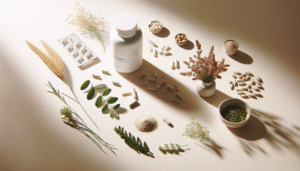If you’ve ever felt constantly tired, lightheaded, or short of breath then iron deficiency could be the reason. It’s one of the most common nutrient deficiencies in women, especially during the childbearing and perimenopausal years. Yet, it’s often missed or misdiagnosed.
Why Iron Matters So Much for Women
Iron is essential for producing hemoglobin—the protein in red blood cells that carries oxygen throughout your body. Without enough iron, your cells can’t get the oxygen they need to function, leaving you drained and foggy.
Women need more iron than men due to monthly menstrual blood loss, pregnancy demands, and hormonal shifts. As you move into your 30s and beyond, staying on top of iron status becomes a key pillar of long-term vitality.
Common Signs of Iron Deficiency
Iron deficiency can sneak up on you, especially if your levels drop gradually. Look for these telltale signs:
- Persistent fatigue and low energy
- Brain fog or trouble concentrating
- Dizziness or lightheadedness
- Headaches or migraines
- Shortness of breath, especially with exertion
- Cold hands and feet
- Pale skin or dark under-eye circles
- Restless legs at night
- Brittle nails or hair shedding
Main Causes of Iron Deficiency in Women
1. Heavy Periods
Menstrual blood loss is one of the most common reasons women lose iron. If your periods last more than 7 days or involve heavy flow, you’re at higher risk.
2. Pregnancy & Postpartum
Pregnancy dramatically increases iron needs to support the growing baby and placenta. Many women are depleted by the time they deliver, and recovery postpartum can be slow without supplementation.
3. Digestive Issues
Conditions like IBS, celiac disease, or low stomach acid (hypochlorhydria) can impair iron absorption.
4. Vegan or Vegetarian Diets
Plant-based sources of iron are less bioavailable than those from animal products. Without proper planning, it’s easy to fall short.
5. Chronic Stress or Overtraining
High cortisol levels and excessive physical strain can increase iron turnover and reduce absorption.
How to Test for Iron Deficiency
Ask your doctor for a full iron panel—not just hemoglobin. Key markers include:
- Ferritin: Storage form of iron; ideally 50–100 ng/mL
- Serum Iron and Total Iron-Binding Capacity (TIBC)
- Transferrin Saturation: A measure of how much iron is bound to transport proteins
Low ferritin with normal hemoglobin can still mean deficiency. Always test before supplementing.
Best Food Sources of Iron
There are two types of dietary iron:
- Heme iron (animal-based): more easily absorbed
- Non-heme iron (plant-based): requires vitamin C for better absorption
Top iron-rich foods include:
- Red meat, liver, chicken, turkey
- Clams, oysters, sardines
- Lentils, chickpeas, tofu
- Spinach, pumpkin seeds, quinoa
- Fortified cereals or oatmeals
Tip: Avoid tea, coffee, or calcium-rich foods around iron meals—they block absorption. Pair with vitamin C (like citrus or bell peppers) to boost uptake.
Iron Supplementation: What to Know
If food isn’t enough, supplements can be helpful:
- Choose ferrous bisglycinate or heme iron polypeptide for better absorption and fewer side effects
- Start with 25–30 mg daily under guidance
- Take on an empty stomach with vitamin C, if tolerated
- Watch for constipation or stomach upset
Recheck ferritin levels every 8–12 weeks and adjust dosage as needed.
Related Reading
Explore the full list of nutrients women should monitor: Top 5 Vitamins Women Over 30 Should Track
FAQ: Vitamin B12 for Women
How do I know if I’m iron deficient?
Fatigue, dizziness, and hair loss are common symptoms—but only a blood test (especially ferritin) can confirm low iron.
What’s the difference between anemia and iron deficiency?
Anemia is a condition where hemoglobin is low. Iron deficiency is a leading cause, but they’re not the same. You can be iron-deficient without being anemic.
Can I fix low iron with food alone?
Yes—if you’re deficient and under supervision. Too much iron can be harmful, so don’t supplement without testing first.
Is it safe to take iron daily?
Yes. Digestive issues or certain medications can impair absorption even if intake is adequate.
How long does it take to feel better?
With consistent treatment, many women start to feel better within 2–6 weeks. Full iron stores may take 3–6 months to rebuild.
Does perimenopause affect iron needs?
Yes. Irregular or heavy bleeding during perimenopause can increase risk of deficiency. Monitoring iron during this stage is especially important.
A Word From Vitamins For Woman
You don’t have to live in a constant state of fatigue, brain fog, or burnout. If iron deficiency is holding you back, know that it’s both common and correctable—with the right testing, food, and support. Listen to your body, ask the right questions, and don’t be afraid to advocate for better care. You deserve to feel clear, strong, and recharged every day.
References
Camaschella, C. (2015). Iron-deficiency anemia. New England Journal of Medicine, 372(19), 1832–1843. https://doi.org/10.1056/NEJMra1401038
WHO. (2020). Anaemia in women and children. World Health Organization. https://www.who.int/data/nutrition/nlis/info/anaemia-in-women-and-children
Tolkien, Z., et al. (2015). Ferrous sulfate supplementation causes significant gastrointestinal side-effects in adults: a systematic review and meta-analysis. PLOS ONE, 10(2), e0117383. https://doi.org/10.1371/journal.pone.0117383
Killip, S., Bennett, J. M., & Chambers, M. D. (2007). Iron deficiency anemia. American Family Physician, 75(5), 671–678.
Pasricha, S. R., et al. (2014). Control of iron deficiency anemia in low- and middle-income countries. Blood, 121(14), 2607–2617. https://doi.org/10.1182/blood-2012-09-453522







